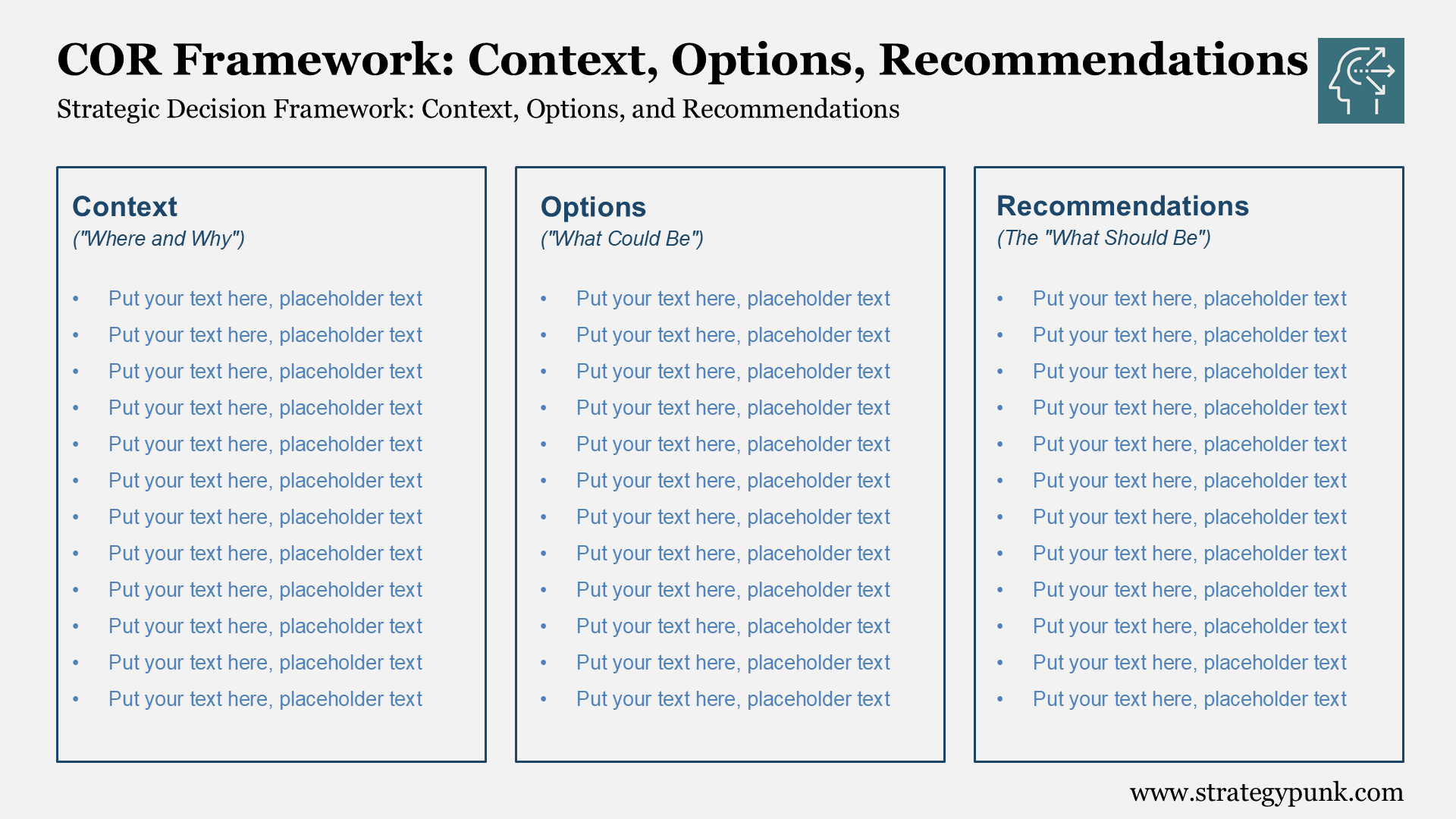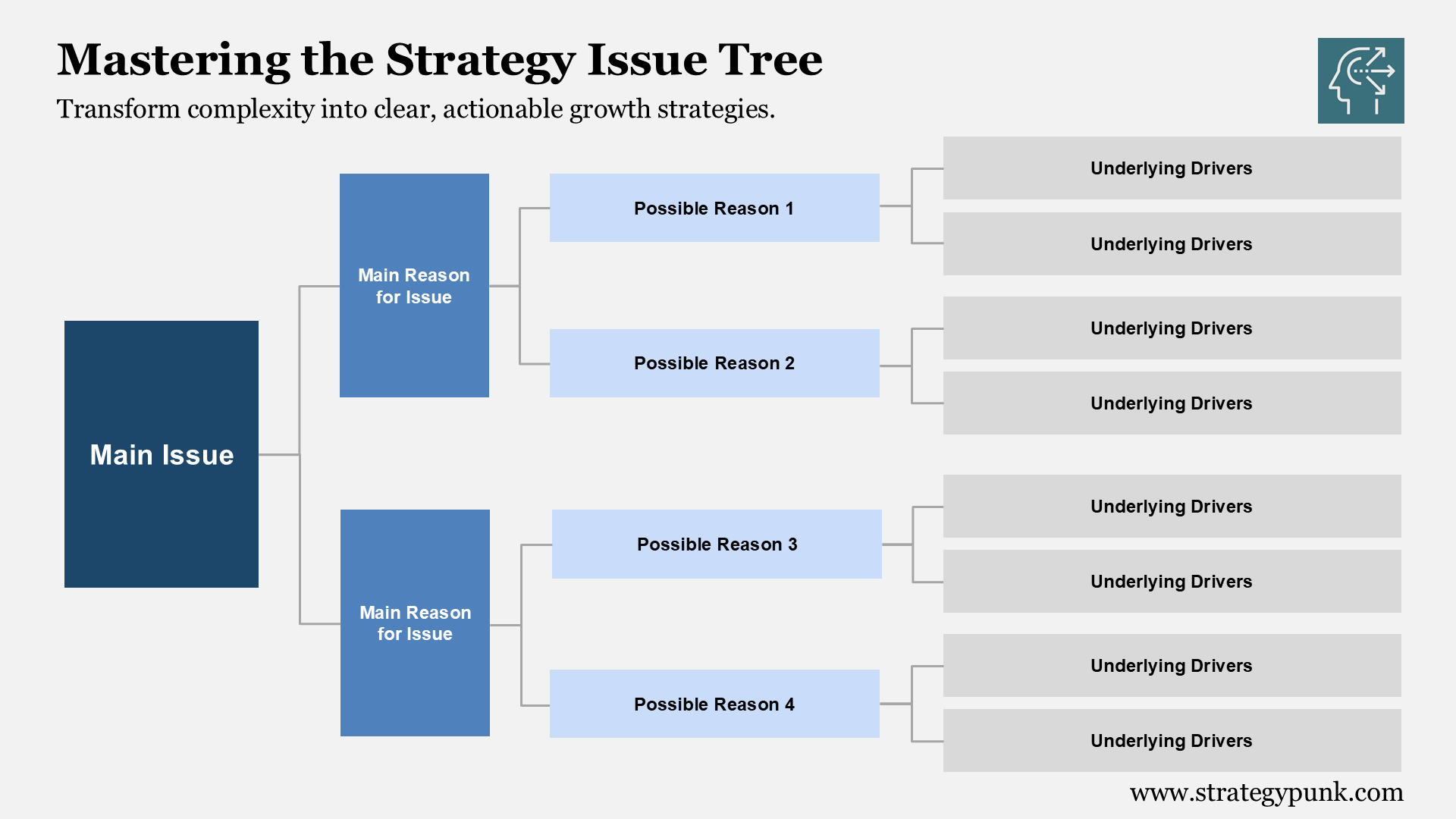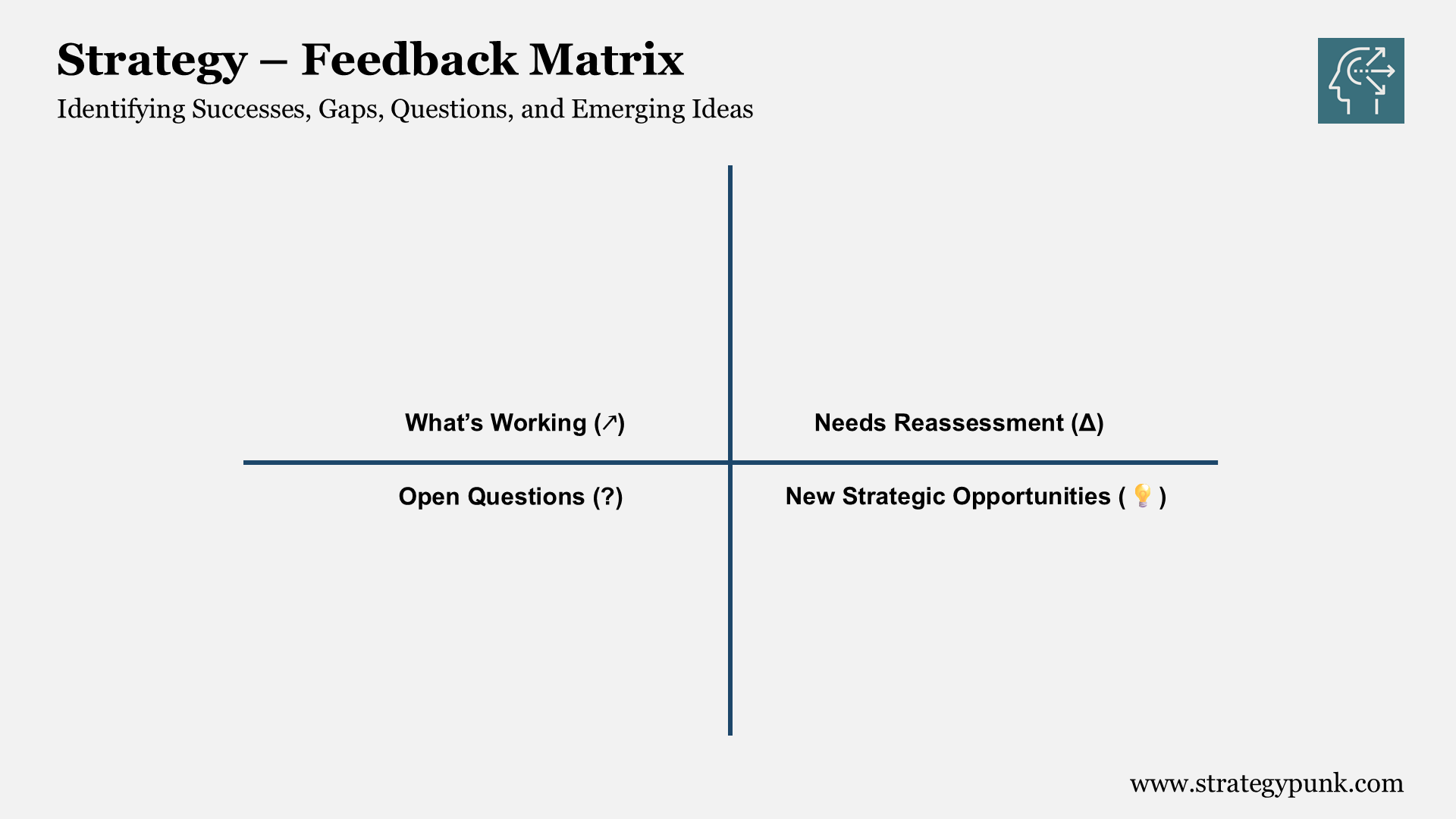Why Agile Organizations are the Future of Business (Plus Free Template)
Why Agile Organizations are the Future of Business. Ideas, Benefits and 7 characteristics of Agile Organizations. Plus Free PDF, PowerPoint, and Google Slides Templates.

The Agile Organization: Introduction
Disruption is here to stay: Agile Organizations must respond to turmoil and uncertainty.
When there is disruption, the ability to respond to it quickly and effectively will set you apart from your competitors. That’s why agility is so essential in the modern business world. A fast-paced business environment, new technology innovations, and customer demands are challenging organizations to be more agile than ever before. That’s why organizations are increasingly adopting agile practices as a way of working that can support innovation and faster response times by integrating processes and culture.
Read on to learn more about what it takes to transform an organization from an ineffective one into a powerful force for innovation in your industry by adopting agile practices.
What is an Agile Organization?
Agile organizations thrive under conditions of constant change, uncertainty, and disruption. They can operate at high speed, be flexible and responsive to change, and adapt their processes to meet new challenges quickly.
They have a culture of continuous improvement, an empowered workforce that trusts in one another, and a shared vision for the organization’s future.
Agile is a set of guidelines that can be applied to any industry or profession. It is a mindset, philosophy, values, and practices that enable people to respond more effectively to change.
Creating an agile organization requires a flat structure focusing on collaboration and communication. It would be best to have an open culture and set guidelines for decision-making that everyone can follow.
Lastly, you should ensure that your employees are empowered and given autonomy over their work so that they can be creative and work independently without being micromanaged by higher-ups.
Why Agile? What are the benefits of an Agile Organization?

Organizations adopting agile practices generally notice these benefits:
Improved product and service quality
With an emphasis on continuous improvement, teams can address issues early on and fix them quickly. Issues that creep in towards the end of a project cycle can be disastrous, which leads us to the next point.
Increased customer satisfaction
If you meet your customer's expectations, you’ll create loyalty and brand evangelists who will recommend your product to others. If you fall short of those expectations, you’ll have a negative experience that will impact your business.
Increased employee engagement and retention
Happy employees are productive employees. If they have the tools and resources they need to succeed, they'll feel fulfilled and appreciated. If they think underutilized or unappreciated, they’ll be disengaged and unhappy.
Agile organization vs. Traditional organization
Agile organizational structures differ from traditional (bureaucratic) organizations in that they are less top-down and more bottom-up and collaborative.
Agile organizational structures also promote flexibility and autonomy, allowing employees to make decisions based on their experience, expertise, and needs.
Furthermore, agile organizational structures are built on trust and communication between all members of an organization. They foster open communication between team members so that all members feel free to share their ideas and concerns. This way, everyone can build a shared vision for the organization's future.
Agile organizational structures promote innovation and facilitate collaboration by encouraging everyone to be involved in every stage of the project process. Because team members share knowledge and information at all stages of the project lifecycle, they can work together to solve problems and create innovative solutions.
What are the 7 characteristics of an Agile Organization?
These are the characteristics that make an organization agile. Agile companies are better equipped to handle the ever-changing digital world and the challenges that come with it. There is no one-size-fits-all approach to an agile organization, but five characteristics stand out:
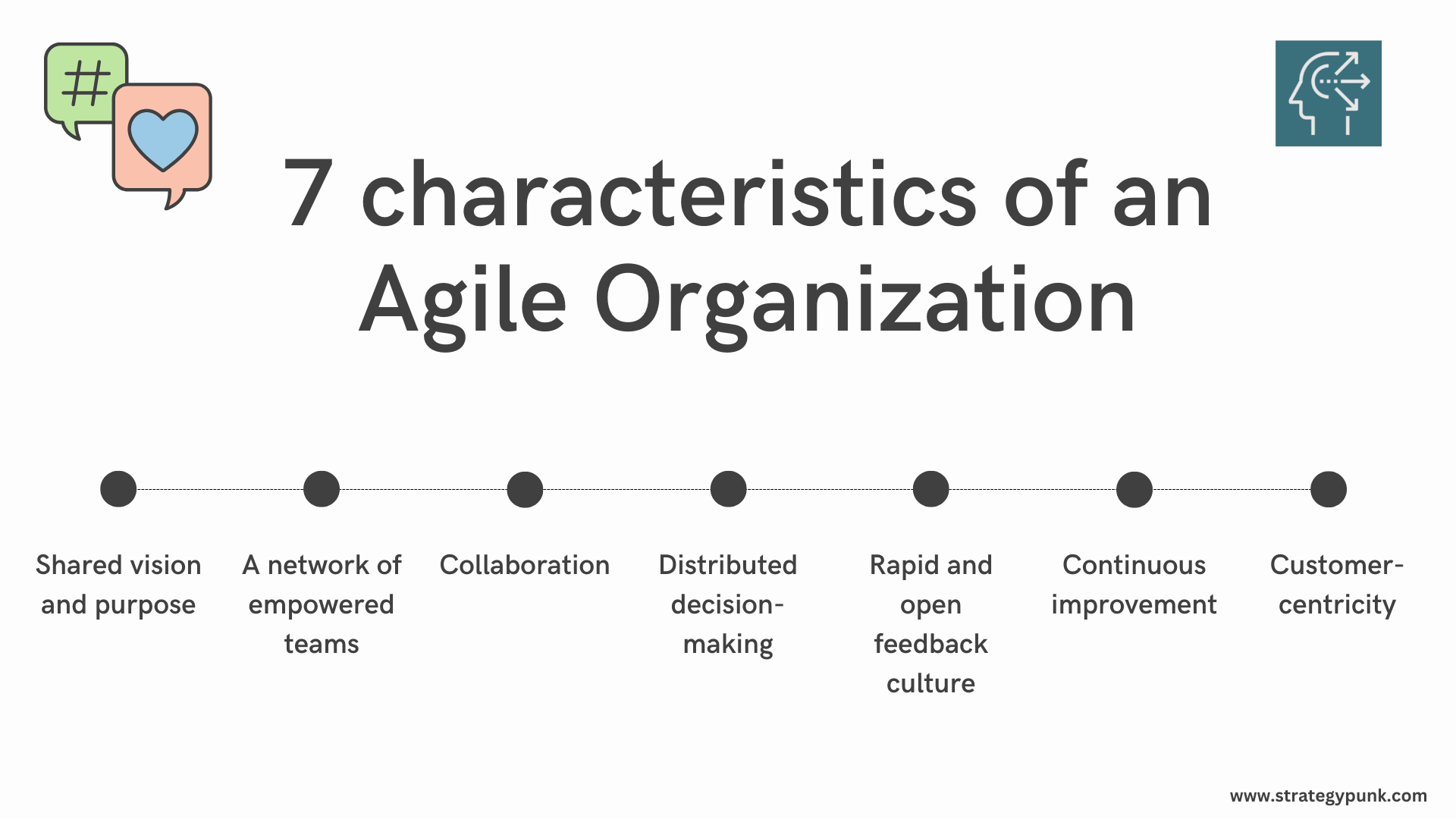
Shared vision and purpose
A shared vision and purpose are established across the organization. Team members have a shared vision for the organization’s future because they work towards a common goal. They understand the bigger picture, the organization’s goals, and where they fit in the scheme.
A network of empowered teams
Agile organizations employ a team-based approach to project management. This means the team answers to the customer and is empowered to make decisions independently. This approach creates an empowered workforce that can trust in one another and work autonomously. Team members are empowered to make decisions because they have the information and support they need to make informed decisions. In a hierarchical organization, someone in management would make the decision. In an agile team, the team makes the decision.
Collaboration
The most essential quality of an Agile organization is collaboration. The ability to work together and share ideas and information across the organization can help drive business success. All aspects of the business must be working together in one direction. This is especially true when engaging the customer at every process stage. As Agile organizations grow in size, collaboration becomes more challenging. This is why improving cooperation through new technologies or clear and consistent ways of working across teams and functions is critical.
Distributed decision-making
As organizations grow, it’s becoming more important to break down silos and develop a shared sense of ownership across distinct functional areas. This is especially important in decision-making—decisions should be made as close to the work as possible. This is crucial when it comes to decision-making that impacts the customer. Going to the source of the work, such as the people responsible for the design, the development, or even the customer support, can help ensure that the right decision is being made. It’s equally essential that distributed decision-making extends beyond just the functional areas. The ability of the entire organization to participate in decision-making, especially when it comes to issues relevant to the customer and the organization as a whole, can help everyone feel more connected to the work being done.
Rapid and open feedback culture
One of the most essential characteristics of an Agile organization is the ability to receive rapid feedback. This is not just about using surveys or focus groups to understand customer satisfaction at the end of the process. Instead, it’s about continuously collecting and acting on information from the customer throughout the process. The feedback doesn’t need to be a survey—it can come from various sources, such as usability tests, product experiments, and talking directly to customers. The important thing is that organizations are finding ways to get feedback as quickly as possible so they can learn and adjust their approach to avoid unnecessary delays and costs.
Continuous improvement
Another critical characteristic of an agile organization is continuous improvement. This is the ability to learn from mistakes and avoid the risk of getting stuck in the same way of working, especially when it comes to customer engagement and the design of products. One of the best ways to support continuous improvement is to involve diverse stakeholders in decisions about how the work is designed and delivered. It’s important not to silo expertise or focus on one way of working. This can help prevent decisions from being made in ways that are too rigid and can lead to poor design choices. It’s also essential that organizations celebrate continuous improvement. Too often, it can be seen as a negative experience or something that’s only done after a mistake has been made. Instead, continuous improvement should be seen as a positive and essential part of any organization’s culture.
Customer-centricity and responsiveness
Another essential characteristic of an Agile organization is the ability to respond quickly to customer needs. This goes beyond reacting to feedback. It’s about proactively engaging customers and anticipating how they might want to use a product or service. For example, when a car manufacturer designs a new model, they will have a vision for how their cars will be used. However, they also know that customers have ideas and may use the product differently. They might use models such as simulations to help them understand how their new model will perform in various situations. This is an example of being responsive to customer needs. Rather than predicting how customers will use a product or service, organizations can use simulation and other forms of research to help them understand how their product performs in various situations and how customers would like to use it.
McKinsey's five trademarks of agile organizations
Agility is not just a set of principles to be plugged into an organization and wait for the magic to happen. It’s a new way of working, thinking, and operating that requires significant organizational changes. To achieve this transformation, your company must adopt agile practices in all areas of its business.
McKinsey’s article about leading agile organizations discusses five main principles every company should follow to adapt quickly and remain competitive in the 21st century.
Agile businesses, regardless of size or industry, according to McKinsey, have five critical trademarks:

1. Strategy
North Star embodied across the organization
2. Structure
Network of empowered teams
3. Process
Rapid decision and learning cycles
5. People
Dynamic people model that ignites passion
6. Technology:
Next generation enabling technology

The 5 Trademarks of Agile Organizations: PDF Article
How to Implement an Agile Organization
Agile organizations can adapt quickly to change, which is especially important in today's rapidly changing world. The traditional hierarchical organization structure is not the best for agile organizations because it does not allow quick decision-making.
Establish a Strong Agile Culture
To implement agile practices in your organization, you must establish a culture that supports continuous improvement and collaboration.
To do this, you’ll need to engage all stakeholders from all departments in the organization.
- Hold team meetings where project leaders can discuss their team’s progress and roadblocks.
- Hold retrospectives where teams can discuss improving their process and identify areas that need improvement.
- Involve stakeholders in decision-making and problem-solving.
- Create transparency by hosting all meetings in a common area where all stakeholders can attend.
- Introduce a meritocracy where employee performance is evaluated based on skill and competencies.
- Implement a rewards and recognition program that promotes and maintains the agile culture.
- Keep an open door policy where team leaders and executives encourage collaboration and feedback.
- Promote an inclusive work environment where employees are encouraged to ask questions and seek help.
- Reinforce agile practices in a consistent and timely manner.
Organizational Agility
After establishing a robust and agile culture in your organization, you need to identify the bottlenecks. You can do this by conducting a simple lean analysis.
- Start by categorizing your activities into value-added activities and non-value-added activities.
- For value-added activities, look for ways to i.
- For non-value-added activities, look for ways to eliminate them.
What are examples of agile organizations?
- Google.
- Spotify.
- ING.
- Adobe.
- Mastercard.
Wrapping up
The modern business world is characterized by a high level of disruption. Organizations must be agile enough to respond quickly to change and new information, which is why agility is critical to business success.
Organizations must adopt agile practices, which are working methods that focus on continuous improvement and collaboration. These practices include distributing decision-making, receiving constant feedback, and being responsive to customer needs. When an organization is agile, it can respond more quickly to disruption and deliver better products and services to customers.
Links & Resources
Bain Consulting. Agile Enterprise
McKinsey: The five trademarks of agile organizations
Strategy&: Six dimensions of the agile enterprise: What leading companies are doing

Startup Idea Validation Template
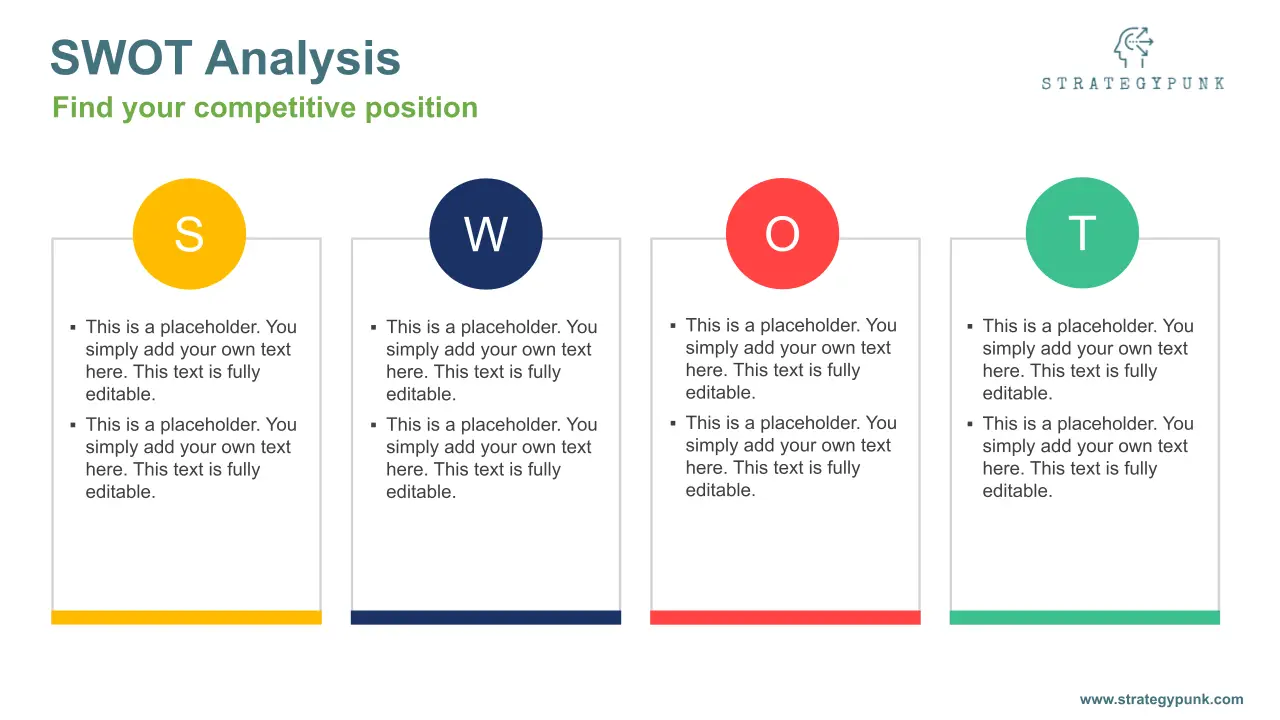
SWOT Analysis
Agile Organizations Guidebook
in PDF, Powerpoint and Google Slides format
Agile Organization Template PDF
Please subscribe and sign in to download the template in Google Slides or PowerPoint format for free below.




